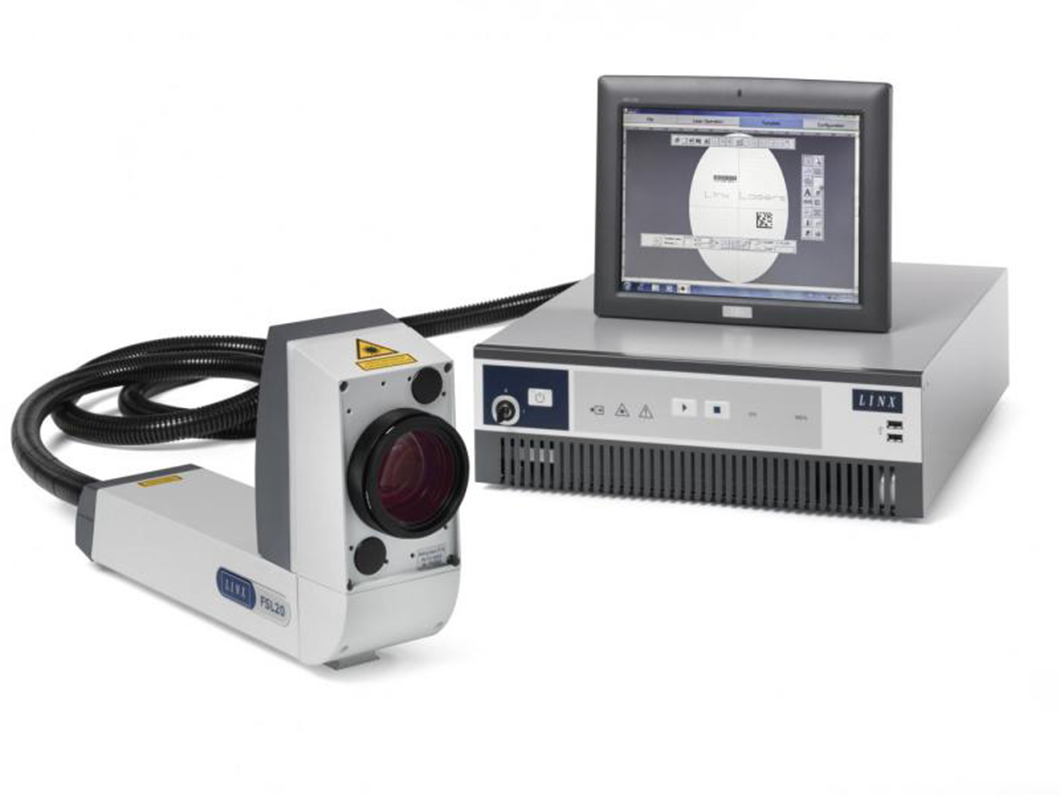Linx Fiber FSL20 and FSL50
Linx FSL20 and FSL50 fibre laser coders offer a cost-efficient and hugely flexible coding solution across the widest range of materials and substrates for both static applications and moving production lines.
Technology
Solid state laser Vs gas (e.g. C02 leakage over time) – long term Linx fibre lasers are more reliable & compactYAG laser produce a similar wavelength but have some key negatives –Inefficient pumping and water cooling
–Large footprints – difficult to integrate
Produce a different wavelength – which gives it capability to mark different substrates
The beam is generated and confined inside the small core of fibre which means the beam is very straight and can be focused on a very small dot
Like C02 galvos and mirrors move the laser beam over the product
2 types of fibre laser continuous wave Vs Q switched – Linx are Q switched giving high peak power enabling better code quality on more substrates
Benefit of making fiber laser
High beam quality–High resolution
–Small spot sizes – excellent quality codes and smaller products
–Fine line widths
Easy integration due to compactness and BTU options
High reliability – 100,000hrs operation possible
Complete traceability – permeant mark on difficult substrates.
No consumables such as ink or solvent
Air cooled – removal of problems associated with water cooling e.g. leaking or clogging as with YAG
Additional advantage
Easy to use proven softwareNo consumables (Ink, solvent, No water cooling costs)
Mark on the fly and static
Marking speed 800 character per second (application dependent)
Linx are using the Videojet platform with one key benefit the 20w system is circa 15% faster than the Videojet 20w











